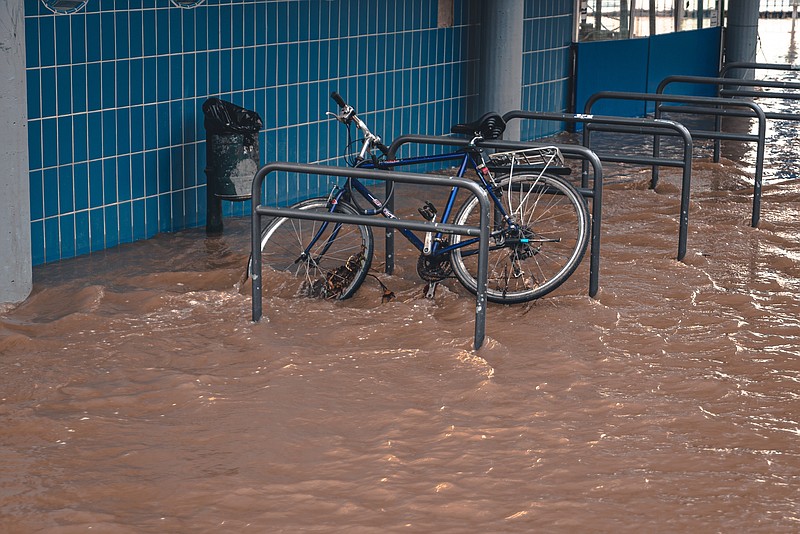CAMDEN The National Weather Service, in cooperation with the Arkansas Department of Emergency Management, has proclaimed the week of February 28 through March 6 as Severe Weather Awareness Week in Arkansas.A different topic will be discussed each day, and today’s topic is flooding.
According to the NWS, the Flood Warning continues for the Ouachita River At Camden, until further notice. At 9:30 A.m. Monday the stage was 33.3 feet. Flood stage is 26.0 feet.
Minor flooding is occurring and minor flooding is forecast. he river is expected to rise to a crest of 34.5 feet early Wednesday morning. *
At 34.0 feet overbank flooding closes many roads. The Harmony Grove community has flood problems at this stage. Many low lying roads are flooding with access to some residential areas by boat only.
High water usually comes in two phases: flash flooding and river flooding.
Flash floods usually occur within six hours. The rate of rainfall exceeds the rate of runoff; that is, rain falls faster than it can be carried away. Because water has nowhere to go, it covers roads and fills small streams and creeks.
Flash flooding is usually caused by very slow-moving thunderstorms, or thunderstorms that repeatedly move over the same areas.
Urban settings are especially prone to flash floods due to large amounts of concrete and asphalt surfaces that do not allow water to penetrate into the soil.
Places surrounded by steep, hilly terrain are also susceptible to flash floods due to rapid runoff /water moving downhill at elevated speeds/ into streams and creeks.
In the last 30 years, flash flooding was the deadliest thunderstorm hazard, and caused more fatalities than tornadoes and lightning.
There are an average of 80 to 90 fatalities annually due to flash floods across the country.
Roughly half of flash flood deaths occur when people try to drive through flooded areas. Moving water two feet deep is sufficient to carry away most vehicles, even pickup trucks and sport utility vehicles.
In 2020, despite well above average rainfall and flash flooding at times, high water led to no fatalities.
The most deadly flash flood event in recorded state history happened in 2010. The Little Missouri River, a tributary, rose more than 20 feet during the predawn hours of June 11th. This was after more than half a foot of rain. Campers at the Albert Pike Recreation Area /Montgomery County/ were awakened to raging water, and 20 people drowned.
River flooding is a longer term event than flash flooding, and can last for several days or even weeks. Water from flash floodingeventually makes its way into rivers, with excess liquid flowing into nearby towns, fields, etc.
Rivers are most likely to overflow when the soil is saturated, and runoff rates are high, and or water levels are elevated prior to a heavy rain event.
When rivers spill over, it can be devastating. Water can overtake homes, businesses, and thousands of acres of cropland.
For much of 2020, several tributaries were high including the Black, Cache, Ouachita, and lower White Rivers. Even so, any flooding was generally minor, and the rivers mostly behaved.
Flood Safety Rules
• You should know which places in your area are prone to flooding, and avoid these places in times of rising water.
• Do not attempt to cross flowing streams while driving or on foot.
• If flood waters are between you and your destination, the National Weather Service wants you to remember a simple slogan: Turn Around - Don’t Drown.
• Outdoor activities are very popular in Arkansas. If you enjoy camping or similar recreation, be especially careful if you spend the night near streams. A thunderstorm miles upstream from your location could produce enough rain to cause flooding, even if it is not raining much where you are.
Never allow children to play around high water, storm drains, and culverts.

